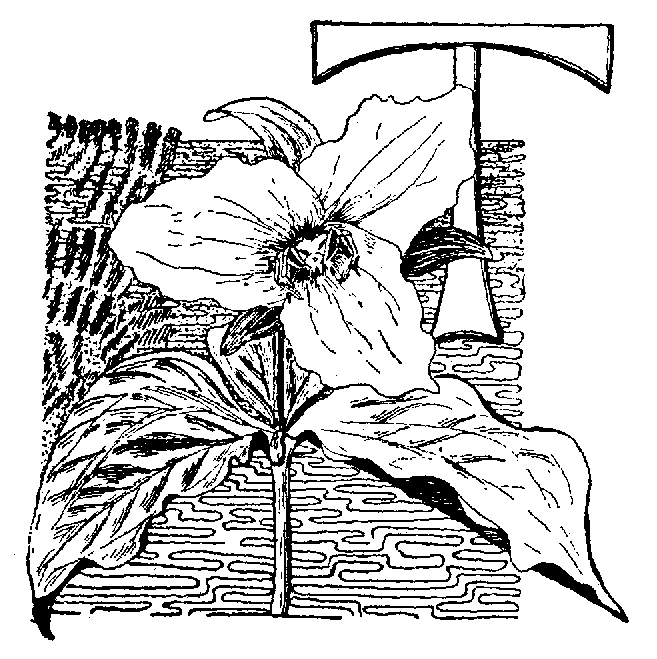



|
 HERE are certain spiders which are crablike in
form, and their legs are so arranged that they
can walk more easily sidewise or backward than
forward. These spiders spin no webs, but lie
in wait for their prey. Many of them live upon
plants and fences and, in winter, hide in protected
places.
HERE are certain spiders which are crablike in
form, and their legs are so arranged that they
can walk more easily sidewise or backward than
forward. These spiders spin no webs, but lie
in wait for their prey. Many of them live upon
plants and fences and, in winter, hide in protected
places.
The white crab-spider is a little rascal that has discovered the advantage of protective coloring as a means of hiding itself from the view of its victims, until too late to save themselves; the small assassin always takes on the color of the flower in which it lies concealed. In the white trillium, it is greenish white; while in the golden-rod its decorations are yellow. It waits in the heart of the flower, or in the flower clusters, until the visiting insect alights and seeks to probe for the nectar; it then leaps forward and fastens its fangs into its struggling victim. I have seen a crab-spider in a milkweed attack a bee three times its size. This spider was white with lilac or purple markings. If disturbed, the crab-spider can walk off awkwardly or it may drop by a silken thread. It is especially interesting, since it illustrates another use for protective coloring; and also because this species seems to be able to change its colors to suit its surroundings.
![[Illustration]](http://www.gatewaytotheclassics.com/gold/books/comstock/invertebrates/comstock_invertebrates_zpage485.gif)
A common crab-spider. |
Leading thought— The white crab spider has markings upon its body of the same color as the flower in which it rests and is thus enabled to hide in ambush out of the sight of its victims—the insects which come to the flower for nectar.
Method—Ask the children to bring one of these spiders to school in the flower in which it was found; note how inconspicuous it is, and arouse an interest in the different colors which these spiders assume in different flowers.
Observations—
1. What is the shape of the body of the crab-spider? Which of the legs are the longest? Are these legs directed forward or backward?
2. How is the body marked? What colors do you find upon it? Are the colors the same in the spiders found in the trilliums, as those in other flowers? Why is this? Do you think that the color of the spider keeps it from being seen?
3. Place the white spider which you may find in a trillium in a daffodil, and note if the color changes.
4. Do the crab-spiders make webs? How do they trap their prey?
![[Illustration]](http://www.gatewaytotheclassics.com/gold/books/comstock/invertebrates/comstock_invertebrates_zpage486.jpg)
Crab-spiders on golden-rod. This species is white when lurking in the white trillium and yellow when among flowers of the golden-rod. Photo by Verne Morton. |